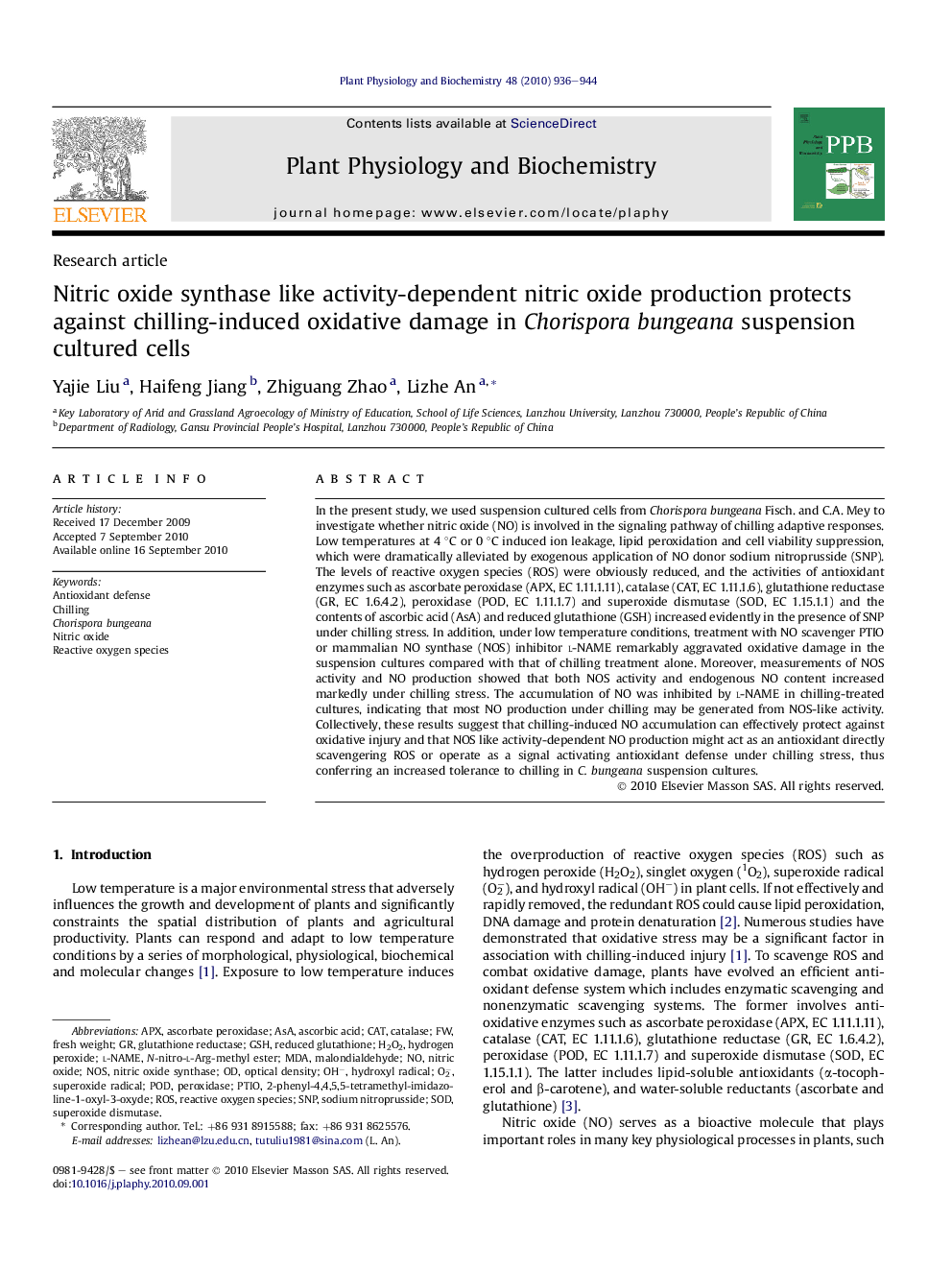| Article ID | Journal | Published Year | Pages | File Type |
|---|---|---|---|---|
| 2016407 | Plant Physiology and Biochemistry | 2010 | 9 Pages |
In the present study, we used suspension cultured cells from Chorispora bungeana Fisch. and C.A. Mey to investigate whether nitric oxide (NO) is involved in the signaling pathway of chilling adaptive responses. Low temperatures at 4 °C or 0 °C induced ion leakage, lipid peroxidation and cell viability suppression, which were dramatically alleviated by exogenous application of NO donor sodium nitroprusside (SNP). The levels of reactive oxygen species (ROS) were obviously reduced, and the activities of antioxidant enzymes such as ascorbate peroxidase (APX, EC 1.11.1.11), catalase (CAT, EC 1.11.1.6), glutathione reductase (GR, EC 1.6.4.2), peroxidase (POD, EC 1.11.1.7) and superoxide dismutase (SOD, EC 1.15.1.1) and the contents of ascorbic acid (AsA) and reduced glutathione (GSH) increased evidently in the presence of SNP under chilling stress. In addition, under low temperature conditions, treatment with NO scavenger PTIO or mammalian NO synthase (NOS) inhibitor l-NAME remarkably aggravated oxidative damage in the suspension cultures compared with that of chilling treatment alone. Moreover, measurements of NOS activity and NO production showed that both NOS activity and endogenous NO content increased markedly under chilling stress. The accumulation of NO was inhibited by l-NAME in chilling-treated cultures, indicating that most NO production under chilling may be generated from NOS-like activity. Collectively, these results suggest that chilling-induced NO accumulation can effectively protect against oxidative injury and that NOS like activity-dependent NO production might act as an antioxidant directly scavengering ROS or operate as a signal activating antioxidant defense under chilling stress, thus conferring an increased tolerance to chilling in C. bungeana suspension cultures.
Research highlights►NO protects against chilling-induced oxidative injury. ►NO serves as a second messenger in chilling signaling pathway. ►Chilling-induced NO accumulation is mainly produced from NOS-like activity. ►NO acts as an antioxidant directly scavengering ROS. ►NO operates as a signal activating antioxidant defense under chilling.
